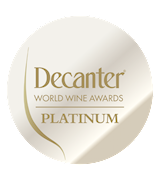Best Northwestern Chinese Foods
Biangbiang noodles, also known as belt noodles due to their broadness and length, are a specialty of Shaanxi province in China. The noodles are usually topped with vegetables and herbs such as spring onions, garlic, leeks, coriander, Sichuan peppercorns, cumin, and chili.
There are two stories about the origin of these unusual noodles: one says that the name stems from the sound of handmade noodles being stretched and flapped, and the other one says that the word biangbiang was invented by a Chinese Emperor. Unusually, the word biang doesn't exist in the Chinese language, and it is made up of 57 strokes, the most of any Chinese character.
Liangpi is a noodle dish that originated in China's Shaanxi province. To prepare the dish, noodles that are made from either wheat flour, rice flour, or a combination of both are dressed with soy sauce, chili oil, and vinegar, while typical garnishing includes thinly sliced strips of cucumber, bean sprouts, and cilantro.
The meaning of the name when translated is cold skin, referring to the chewy, thick, and translucent texture and appearance of the noodles, while their genesis, according to a folk tale, happened during the Qing Dynasty. Depending on what ingredients are used, several variations of the dish exist; liangpi from the city of Hanzhong is prepared with steamed garlic and hot chili oil, maijang liangpi is named after the black sesame paste that's used in the sauce, and shan xin gan mianpi is garnished with wheat gluten, mashed garlic, and bean sprouts in a sauce made with vinegar, chili oil, and salt.
MAIN INGREDIENTS
Xinjiang lamb skewers is a dish consisting of pieces of lamb (rarely even mutton) that are skewered onto a stick and then grilled using a special technique. The lamb is first cut up into pieces, each having a different texture and flavor. Every piece of lamb can be grilled, from lean and fatty meats to skin, tripe, marrow, and offal.
The first step is shortly grilling the lamb, then dipping it into hot mutton suet that’s been previously melted in a metal can, which locks in the juices and adds rich flavor. Then, the skewers are seasoned — the spices distribute thanks to the coating of fat evenly.
Rou jia mo is a traditional burger and street food item originating from the province of Shaanxi. The dish consists of a bun (bai ji mo) that's usually stuffed with braised pork belly. Although there are variations, the pork belly is often braised with a mixture of onions, ginger, hot peppers, sugar, soy sauce, various spices (over 20), and Shaoxing wine.
The buns date back to the Qin dynasty, while the braised pork dates back to Zhou dynasty. In the past, the buns were baked in a clay oven, but nowadays they're usually cooked in a pan. These small sandwiches are sold by street vendors in Shaanxi, but they're also enjoyed throughout the country, and beef or lamb are often used as a substitute for pork belly.
OTHER VARIATIONS OF Burger
MAIN INGREDIENTS
Lanzhou lamian is a Chinese noodle dish known for its hand-pulled noodles, originating from Lanzhou, the capital of Gansu Province in northwest China. "Lamian" translates to "pulled noodles", as the dough is stretched and folded repeatedly by hand to create long, thin noodles with a perfect chewy texture.
This technique not only aligns the gluten but also enhances the texture of the noodles. The resulting noodles are cooked in a rich beef broth that is clear and flavorful, without the use of soy sauce, allowing the natural flavors of the ingredients to shine through.
Guokui is a traditional flatbread originating from the Shaanxi province, now popular in various regions across China. Known for its large, thin, and crispy texture, guokui translates to "pot helmet," reflecting its distinctive shape when cooked.
The bread is typically large and round, resembling a flattened disc, with a crispy outer layer and a soft, chewy inside. In Shaanxi, there is also guokui type that is round in shape, more reminiscent of a bread loaf than a flatbread, about a foot in diameter, an inch in thickness, and weighs about 2.5 kg.
The preparation starts with making dough from wheat flour, water, and sometimes yeast or baking powder for leavening.
Paomo, a specialty of the Shaanxi cuisine, is a stew consisting of steamed and leavened bread (mó) that is soaked in a simple mutton soup and typically eaten in the city of Xi'an. The invention of the dish is often ascribed to the Song Emperor Zhao Kuangyin, while the name of the stew, when translated from Chinese, reveals its main feature: soaked bread.
Additions commonly include rice noodles and chopped greens, while a side of pickled garlic and sweet chili paste has a principal role in elevating the flavors of the dish. Depending on the type of meat used, there are two variations; yangrou paomo made with lamb, and niurou paomo made with beef.
Best Northwestern Chinese Food Producers
AWARDS

Frankfurt International Trophy - Grand Gold
2023

Concours Mondial de Bruxelles - Grande Médaille d'or
2024

Decanter World Wine Awards - Platinum
2021
BEST Chateau Changyu Wines
AWARDS

Berlin Wine Trophy - Grand Gold
2021

Concours Mondial de Bruxelles - Grande Médaille d'or
2022, 2021
BEST Ningxia Hejinzun Winery Co.,Ltd Wines
AWARDS

Berlin Wine Trophy - Grand Gold
2023

Concours Mondial de Bruxelles - Grande Médaille d'or
2021, 2020
BEST Ningxia Qingtongxia Weijiani Winery Co. Wines
AWARDS

Concours Mondial de Bruxelles - Grande Médaille d'or
2024
BEST Ningxia Helanhong Winery Co., Ltd. Wines
AWARDS

Concours Mondial de Bruxelles - Grande Médaille d'or
2024
BEST Ningxia Lanxuan Winery Co., Ltd. Wines
AWARDS

Concours Mondial de Bruxelles - Grande Médaille d'or
2023
BEST Ningxia Huahao Winery Co. LTD Wines
AWARDS

Concours Mondial de Bruxelles - Grande Médaille d'or
2023
BEST Château Ningxia Yinong Limited Company Wines
AWARDS

Concours Mondial de Bruxelles - Grande Médaille d'or
2023
BEST Ningxia Haixiangyuan Vineyard. Co. Ltd Wines
Silk Road Winery is located in the Yili River Valley in Xinjiang, which is the westernmost wine-producing area in China. The Yili River Valley is surrounded by the Tianshan Mountains on three sides and is open to the west, welcoming warm and humid air currents from the Mediterranean.
The abundant sunshine throughout the year and the sudden temperature difference between day and night contribute to the accumulation of glucose. The sandy soil with good drainage and low fertility is conducive to the rooting and germination of grapevines.
AWARDS

James Suckling - 93 points
2024

Concours Mondial de Bruxelles - Grande Médaille d'or
2024, 2023
BEST Silk Road Vineyards Wines
AWARDS

Concours Mondial de Bruxelles - Grande Médaille d'or
2020
BEST Ningxia Roland Margo Agricultural Technology Co., Ltd Wines
Best Northwestern Chinese Food Products
AWARDS

Concours Mondial de Bruxelles - Grande Médaille d'or
2022, 2021
AWARDS

IWSC- International wine & spirit competition - Spirit Gold Outstanding
2022
AWARDS

Concours Mondial de Bruxelles - Grande Médaille d'or
2024
AWARDS

Concours Mondial de Bruxelles - Grande Médaille d'or
2024
AWARDS

Concours Mondial de Bruxelles - Grande Médaille d'or
2024
AWARDS

Concours Mondial de Bruxelles - Grande Médaille d'or
2022
The wine is known for its rich structure and complex aromas. Cabernet Gernischt is a grape variety that is unique to China and is sometimes considered the Chinese equivalent of Cabernet Sauvignon, but with distinctive characteristics from the specific climatic conditions.
The 2015 vintage shows ripe notes of dark fruit, with subtle spicy tones and a hint of oak, which is typical of wines that have been aged in wooden barrels.
AWARDS

Concours Mondial de Bruxelles - Grande Médaille d'or
2023
AWARDS

Concours Mondial de Bruxelles - Grande Médaille d'or
2023
AWARDS

Concours Mondial de Bruxelles - Grande Médaille d'or
2023
AWARDS

Concours Mondial de Bruxelles - Grande Médaille d'or
2023
TasteAtlas food rankings are based on the ratings of the TasteAtlas audience, with a series of mechanisms that recognize real users and that ignore bot, nationalist or local patriotic ratings, and give additional value to the ratings of users that the system recognizes as knowledgeable. TasteAtlas Rankings should not be seen as the final global conclusion about food. Their purpose is to promote excellent local foods, instill pride in traditional dishes, and arouse curiosity about dishes you haven’t tried.




















